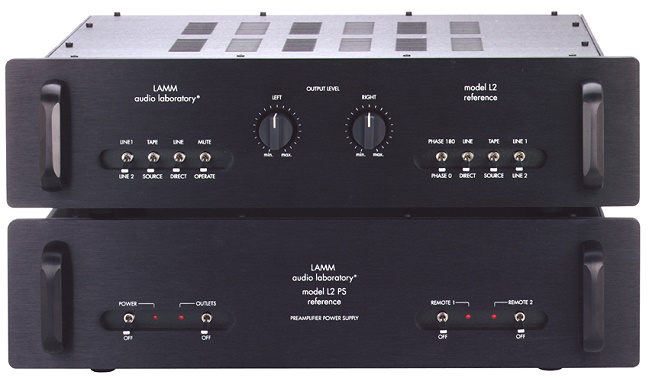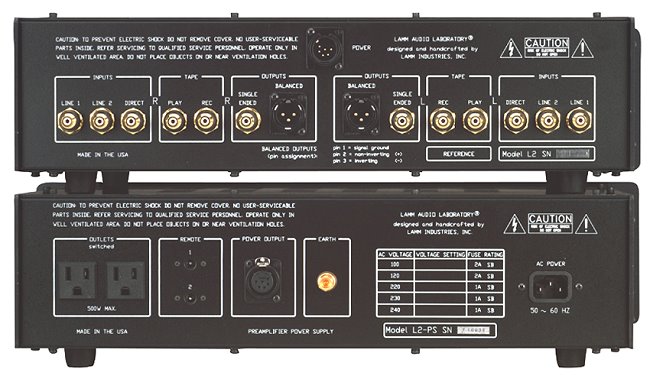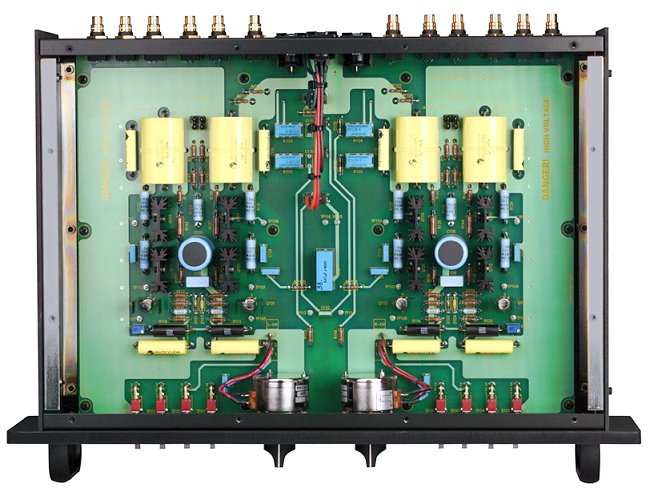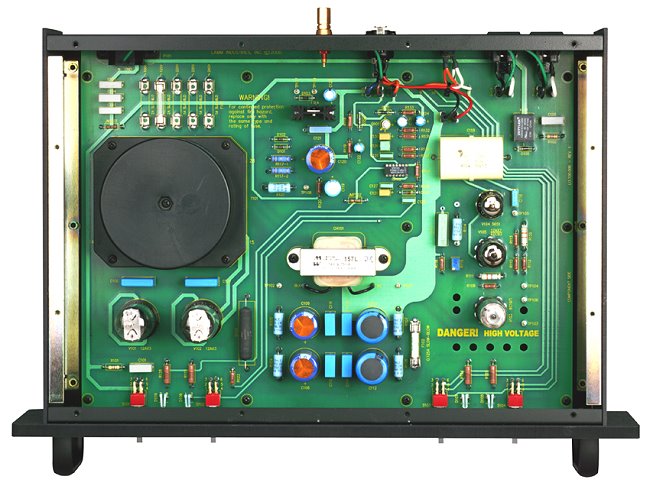Introduction
Ever since I reviewed the
Lamm M2.2 Monoblock Power Amplifiers about a year ago, I knew I just had
to try out one of their preamplifiers too.
So, I asked Elina and Vladimir Lamm if I could get
the L2 Reference Hybrid Line-Stage Preamplifier. Hybrid means it has both
tubes and transistors. In this case, the power supply is all tubes, and the
control circuits are solid state. In fact, the power supply and control
circuits are housed in separate chassis.
I will tell you right now, this is some
preamplifier.
The Design
Although the power supply is all tubed, the
output stage of the L2 is solid state MOSFET. The entire preamplifier is
Pure Class A operation and there is no global negative feedback.
The L2 Reference utilizes a fully balanced
design throughout the circuitry, but all inputs are single-ended, which
means that inverting inputs of both channels are grounded. However, there
are two sets of outputs – balanced and single-ended. The designer, Vladimir
Lamm, feels that this delivers the best fidelity.
Because the voltage regulator has +350 volts
on its plate, Lamm feels the L2 can reproduce the smallest detail.
Essentially, because there is so much voltage available, the preamplifier
can deliver high voltage transients with ease, even though the average
output might only be 1 volt.
Obviously, with a product of this caliber,
only the finest parts are used, such as Dale metal film resistors, PRC wire
wound resistors, Electrocube and Roederstein film capacitors, Cornell
Dublier electrolytic capacitors, TKD stepped potentiometers, and all gold
plated contacts.
Attention was paid to making the L2 able to
drive any input impedance on a power amplifier, but also to be able to
handle the capacitive load of any interconnects, without sonic degradation.
The final design is the culmination of an
entire career's experience with audiophile-quality components. The L2 has
been in the Lamm line for several years, without modification. There is no
need for change.
The power supply and control chassis are
separate in order to keep magnetic fields created by the high voltages in
the power supply from causing interference in the control circuits.
The front panel has dials and switches on both
chassis. These include Power On/Off for the L2, Power On/Off for AC outlets
on the rear, Power On/Off for Remote 1 and 2 (turning on the Lamm M2.2
monoblocks for example), Input Selectors, Phase, Line/Direct, Tape/Source,
and individual Volume Controls for each channel.

The rear panel has RCA inputs, RCA and XLR
outputs, Outlets, Remote Jacks (connects to the Lamm M2.2 monoblocks),
multi-pin jacks for a cable that connects the two chassis to one another, and a grounded AC Power
receptacle.

The insides of both chassis are shown below. The top photo is the control
unit, and the bottom one is the power supply. See the imprint "Danger! High
Voltage" in the power supply chassis? That is what makes this product able
to deliver the fine detail in music of any type, to any power amplifier. The
power amp does not see high voltage, but the muscle potential of the preamp
means it can do, no matter what the capacitance of the interconnect.


Go to Part II.